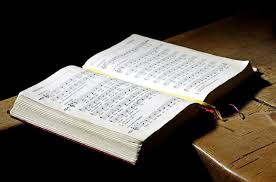Free Catholic Worship Music
A Tremendous Gift
The folks at Corpus Christi Watershed, in preparing for a hymnal of their own, have provided a tremendous resource for Catholic worship leaders. Downloads of 49 old hymnals, in PDF format.
Purchasing these on Amazon or ebay would cost in the hundreds of dollars. But they have provided these all for free.
Thank you Corpus Christi! And I look forward to perusing your newest worship resource, when completed!
Why These Songs Matter
Many Catholic worship leaders, I fear, would look upon such a list and be intimidated by the material.
Where’s the guitar chords? Where’s the YouTube snippet? Where’s the melody?
Not too long ago, hymns such as these lined the pews. Not too long ago, these were on the lips of the faithful devoted.
Did we lose something in the transition to modern hymnody or contemporary praise and worship?
These hymns are lyrically profound. It is extremely hard, today, to even compete with the doctrinal richness of the hymns of old, along with the poetic beauty.
It is an extreme mistake to presume that today’s songs “know better” and that we can throw these songs out.
And yet, top worship leaders Chris Tomlin, Kristian Stanfill and Matt Maher continually draw upon the great hymns of old to render them anew.
If today’s praise and worship artists are rediscovering hymns, why can’t we?
The Three Essentials
There are three essentials when it comes to finding great new worship songs: Great Lyrics, Singable Melody, and Proper Tone.
Great Lyrics
The vast majority of the songs in these resources have lyrics second to none. They are also easily indexed in these books, so you can very quickly find those songs that fit a particular theme or feast day.
However, if the song has antiquated lyrics (“Thee”,”Thou”, etc.), if the song is in the public domain (which every song in a hymnal printed before 1922 is) then you have the freedom to change the lyrics to a slightly more modern take.
Or, if the song has too many verses (some have upwards of twenty), then you are free to edit them down properly–find the morsels of the best–for your purposes.
Singable Melody
It should be assumed that most hymns today have a melody that, properly taught, could be easily sung. They are rhythmic, within a singable range (low-b to high-d), and repetitious.
If the song itself does not have a singable melody, you are free to find a melody that fits. Or, if you are daring, write one yourself.
This would preclude that you should be able to read music. Luckily, there is no lack of musical resources today that can put any musician in the fast-track on learning this essential skill. Take ten minutes and watch some YouTube, and get up to speed, if you must.
Some of the melodies of the older hymns, say, around 1900, are antiquated. You can tell, because they are in 3-4 time, and are littered with 32nd notes. Think… “Take Me Out to the Ball Game.” These, too, you can alter, because they are in the public domain (pre-1922). Shave off the lilting melodies, and make it more acceptable for today.
Proper Tone
This is where it gets fun. Look at the melody, look at the lyrics, and once you find the chord progression for the song, use the instruments at your disposal to find that proper tone.
Perhaps the proper tone is no instruments at all. That’s okay. The key is to make the lyrics come alive, not to prove a point or get your music skills front and center.
As a guitarist, I find that it is not enough to know the chords. I have to ask myself is there anything extra I need to do to breathe life into these words. Sometimes it means playing the chords in a different part of the neck, adding combinations of capos or partial capos, and emphasizing specific notes.
For other music teams, it may employ integrating certain musical sounds, even those they may not be familiar with.
Tools Needed
“But…” I can hear one complain, “where can I find the recording on YouTube?” Where are the guitar chords? Where is the contemporary sound?
You don’t need that.
There are two tools I would highly recommend. The first is a simple notation software. Finale Notepad is a free resource that does exactly this, and has a low learning curve. Once you download it, print out the keyboard shortcuts, and it will take you minutes to type out the melody of a song.
The second tool is the iChant app. It costs a mere $2.99. Along with a simple chant notation chart, and a separate MP3 recorder, you can learn these melodies rather quickly.
Conclusion – It Is Worth It
This may seem like a lot of work.
But it is not. It is extremely fun, and worthwhile.
How cool it is, to introduce a song, and say… “Oh yeah, this was written by St. Ambrose or Thomas Aquinas.”
How cool it is, to have a song re-introduced, from of old, to a new generation.
How cool it is, to join your worship with that of the centuries.









